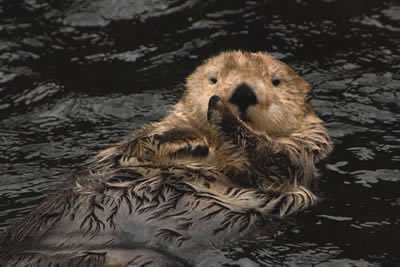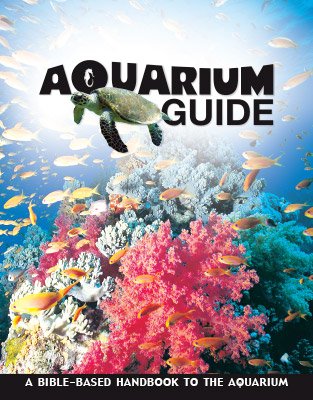Sea Otter
The sea otter has webbed hind feet which are perfect for swimming; its forefeet are smaller with semi-retractable claws.

Design
The sea otter is one of the few animals known to use tools. It uses small rocks or other objects to pry prey from rocks and to hammer or pry open its food. The sea otter can dive up to 330 ft (100 m) when foraging for food. God gave the sea otter the thickest fur in the animal kingdom. Unlike other marine mammals, the sea otter does not have a layer of blubber (fat) to help keep it warm.
Features
- When the sea otter is underwater, its ears and nostrils close.
- The sea otter has webbed hind feet which are perfect for swimming; its forefeet are smaller with semi-retractable claws.
Fun Facts
- A sea otter’s fur contains an estimated 650,000 hairs per square inch. Air is trapped between the hairs, keeping the animal dry.
- Since a sea otter must generate a large amount of heat to maintain its body temperature, it must eat about 20 lbs (9 kg) of food a day. Abalone is its favorite food.
- The sea otter sleeps and rests on its back, usually anchored in a kelp (seaweed) bed.
- It sleeps at sea, sometimes joining hundreds of others in resting areas called rafts.
- Sea otters give birth in the ocean.
CLASS: Mammalia (mammal)
ORDER: Carnivora (meat-eating)
FAMILY: Mustelidae (sub-family Lutrinae)
GENUS/SPECIES: Enhydra lutris
Size: 4–5 ft (1.2–1.5 m)
Weight: Average between 64 and 85 lbs (29–39 kg)
Diet: Clams, crabs, fish, and octopuses
Habitat: Pacific coastal and estuarine areas of North America and Asia
Aquarium Guide
With fun facts about more than 100 animals, this long-awaited Aquarium Guide includes beautiful pictures and reveals the incredible facts and design features that point to our amazing Creator. This handy size guide is excellent for school field trips and family trips to your favorite aquarium!
Browse Kids Book- © 2024 Answers in Genesis
- Privacy Policy
- Contact
- About

